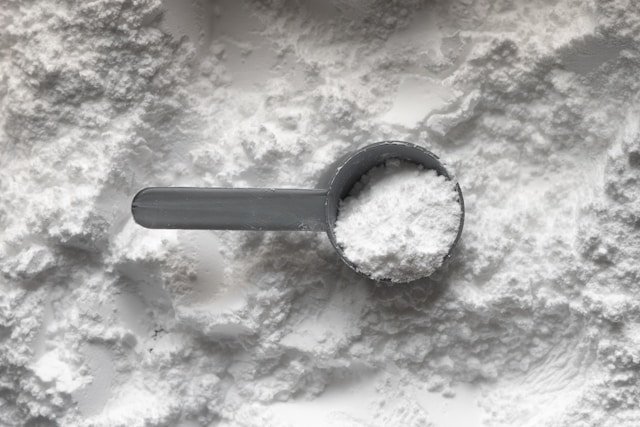Creatine is among the most well-known sports supplements, prized for its established benefits, safety, and effectiveness in enhancing athletic performance. If you are thinking about incorporating it into your regimen, here’s a comprehensive overview of creatine and its various forms.

What is Creatine?
Creatine is a naturally occurring compound most commonly found in muscle tissue, with smaller quantities present in the brain, liver, kidneys, and testes. In muscles, creatine gets converted into phosphocreatine, which is essential for generating quick energy bursts—beneficial for high-intensity activities like weightlifting, sprinting, and various sports.
While your body does produce a small amount of creatine through the liver, kidneys, and pancreas, it can also be obtained from dietary sources such as red meat, chicken, fish, and dairy. Supplements, however, offer a much more concentrated dosage, providing an efficient way to boost muscle creatine levels, which can enhance both performance and recovery.
Increased creatine levels can help you work out harder and more effectively while also reducing muscle damage from intense training. Furthermore, creatine supplementation can decrease post-exercise inflammation and soreness, paving the way for faster muscle recovery and improved gains over time.
Which Type is Right for You?
When selecting a creatine supplement, you will notice several types available, each with unique advantages and disadvantages. Below is an overview of the most common forms, which can assist you in determining which one may be the best fit for your needs.
Creatine Monohydrate
Considered the most effective form of creatine, this type is extensively researched and has numerous studies affirming its ability to boost strength, power, and muscle growth. It contains no unnecessary additives or chemicals that may lead to digestive discomfort.
Generally well tolerated at recommended doses, some individuals may experience mild water retention or bloating, which can usually be alleviated by taking creatine with food.
Additionally, creatine monohydrate is cost-effective, often priced lower than other variations while still providing optimal results, thus representing the best value.
Creatine Hydrochloride (HCL)
Creatine HCL is bonded to hydrochloride molecules, enhancing its water solubility. This increased solubility is thought to improve absorption rates, potentially allowing users to take smaller doses while still achieving results similar to monohydrate.
Some brands suggest that creatine HCL offers greater benefits at lower doses, but supporting research is still limited, necessitating further studies to validate these claims.
Buffered Creatine
Buffered creatine is formulated with an alkaline powder, like sodium bicarbonate, to enhance stomach stability and minimize breakdown before absorption. While this may increase effectiveness, research has not demonstrated significant advantages over monohydrate.
Given that the purported benefits of buffered creatine are still unproven, it’s advisable not to choose this type based purely on marketing hype.
Micronised Creatine
Micronised creatine is processed into smaller particles, which enhances its solubility and may improve absorption. This form may also mitigate some digestive issues that can arise with monohydrate.
Although it may be easier on the stomach, there is no definitive evidence proving that it surpasses monohydrate in efficacy. Its main drawback is the higher price; however, if digestive discomfort is an issue, micronised creatine may still be worth considering.
Creatine Ethyl Ester
This variant of creatine is combined with an ester intended to boost muscle absorption. While the theory posits enhanced cellular uptake, studies indicate it is no more effective than monohydrate. Therefore, it may not be the optimal choice for most users.
Creatine Magnesium Chelate
Creatine magnesium chelate links creatine with magnesium, a vital mineral for muscle function and recovery. Some studies suggest it may help reduce water retention, making it an appealing choice for individuals seeking to prevent bloating.
Magnesium also contributes to muscle endurance and performance, potentially enhancing the overall benefits of creatine supplementation. However, more research is needed to determine if it offers significant advantages over monohydrate.
What to Consider When Purchasing
No matter which type of creatine you decide on, several essential factors should guide your purchasing decision.
Opt for Certified Products
Because dietary supplements lack strict regulation, selecting a reputable brand is vital. Look for products that have undergone third-party testing to verify their quality, purity, and safety. If this information is not evident on the packaging, check the manufacturer’s website.
Review the Ingredients List
Top-tier creatine supplements should contain few additives. Some products may include unnecessary fillers, artificial sweeteners, or inferior creatine that can impact absorption and effectiveness.
Aim for pure creatine monohydrate or scientifically supported options like creatine magnesium chelate. Steer clear of products with excessive sugars, artificial colors, or unverified proprietary blends. Reviewing the ingredients can also help you avoid allergens or substances unsuitable for your dietary needs.
Evaluate Cost-Effectiveness
Creatine comes in a variety of price ranges, but cost does not always equate to quality. To gauge value, calculate the price per serving by dividing the total cost by the number of servings in the container. This method provides a clearer comparison among various brands and forms.
While a lower cost per serving may indicate better value, always assess ingredient quality to ensure you receive a pure and effective product.
Choose a Trusted Brand
Select brands that have established reputations and positive customer reviews. User feedback can guide you toward reliable products that consistently yield results.
Best Practices for Creatine Use
The simplest way to consume creatine is by mixing the recommended dosage (usually 3 to 5 grams) into water, juice, or a protein shake. A shaker bottle can facilitate mixing and ensure even distribution.
Creatine can be taken at any time during the day, but many users prefer taking it post-workout when muscle absorption is maximized. Some individuals opt for pre-workout consumption to saturate their muscles before training.
For optimal absorption, it’s often suggested to take creatine alongside a carbohydrate source, as insulin spikes can help transport creatine into muscle cells.
Conclusion
Creatine is one of the most potent and well-researched supplements available, offering advantages for strength, endurance, and muscle recovery. Among the different types, creatine monohydrate continues to be the gold standard due to its proven effectiveness, affordability, and safety.
If you experience any digestive issues with monohydrate, consider trying micronised creatine or creatine HCL. On the other hand, if you’re aiming to reduce water retention, creatine magnesium chelate could be a viable option.
By selecting a high-quality product from a reputable brand and adhering to proper dosage and timing, you can fully maximize the benefits of creatine supplementation and enhance your overall athletic performance.





